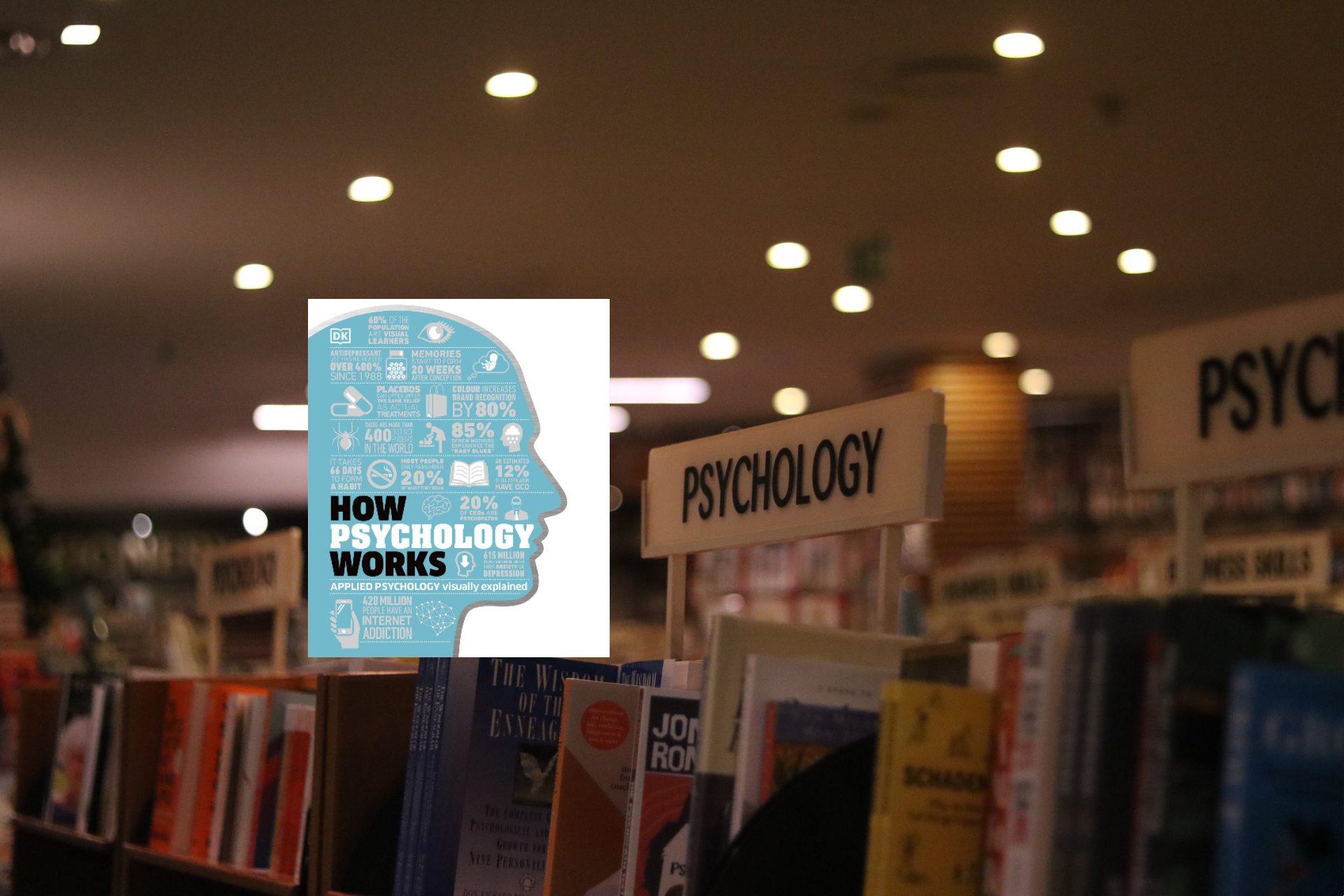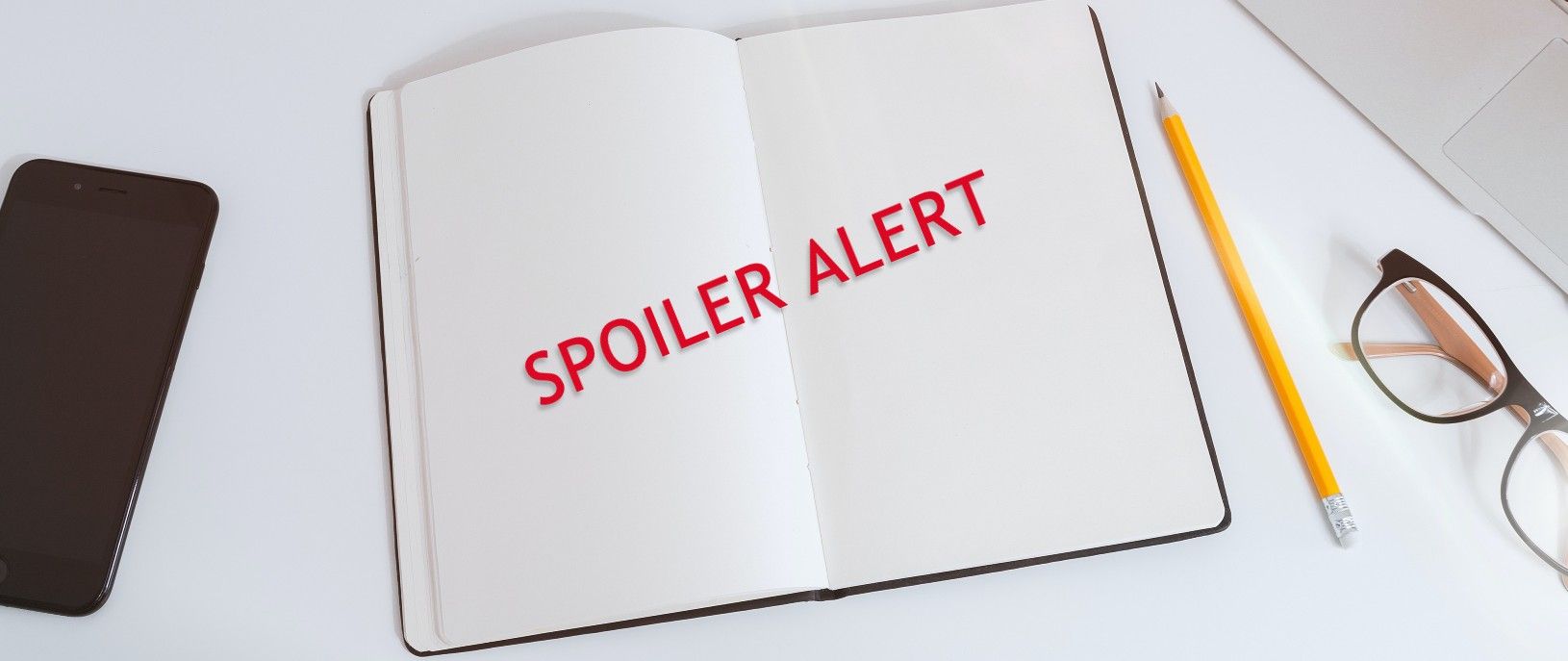How Psychology Works - Book Summary

by Jo Hemmings
“This book delves into the human mind, revealing in a very visual way the science behind the way people think and act.” ― Woman's Weekly
This is an overview of psychology it is great for learning the basics of psychology. The book has visual guides and is easy to read.

Interesting notes extracted from the book:
Chapter 1 - What is Psychology?
Psychology is the study of the mind and behaviour.
Sigmund Freud, a neurologist in the early 20th century, founded the psychoanalytical theory, saying that “personality and behaviour are the outcomes of the continual conflicts of the mind.”
He divided the mind into 3 levels:
- Conscious mind: ideas and emotions the person is aware of.
- Preconscious mind: childhood memories.
- Unconscious mind: person's impulses, desires and thoughts.
Defence Mechanism (eg denial, repression, projection)- Fread: people use this when they are under unpleasant emotions.
Behaviourist approach - Operant Conditioning:
- Positive reinforcement: Give a reward to encourage good behaviour.
- Positive punishment: Give consequences to negative behaviour. (eg scolding a student to stop texting in class.
- Negative reinforcement: Remove something bad to encourage good behaviour. (eg leaving early to avoid traffic jams)
- Negative punishment: Taking away something good to reduce a behaviour. (eg take away the phone because they refuse to do homework)
“I think, therefore I am” Rene Descartes
How the brain works
- Right hemisphere: controls the left side of the body, sensory inputs(visual, auditory, creative and artistic abilities and spatial perception)
- Left hemisphere: controls the right side of the body, analytical(logic, reasoning, decision-making and speech and language)
(source: https://learndojo.org/gcse/aqa-psychology/brain-neuropsychology/)
Neurotransmitters are released at the synapse and can be excitatory or inhibitory :
- Acetylcholine: exitatory- linked to memory, learning and sleep
- Glutamate: excitatory- linked to memory and learning.
- Adrenaline: excitatory- increases heart rate, blood pressure and blood flow to larger muscles
- Noradrenaline: excitatory- similar to adrenaline (fight or flight)
- Gaba: inhibitory- calms
- Serotonin: inhibitory- mood enhancement and calmness - regulates appetite, temperature and muscle movement.
- Dopamine: can be either inhibitory or excitatory - role in reward-behaviour and mood
Memory - “is formed when a group if neurons fire in a specific pattern.”
Chapter 2 - Psychological Disorders*
Some of them:
Depression - can include a continuous low mood or sadness, having low self-esteem, feeling hopeless and helpless, tearful, guilt-ridden, irritable and intolerant.
Causes can be: money, stress, job/unemployment, bereavement, alcohol/drugs, bullying, loneliness, pregnancy/birth or relationship problems, for more than 2 weeks.
Treatment one or more: CBT therapy, Psychodynamic therapy, Antidepressants.
Bipolar disorder - “is characterized by extreme swings, high (mania) and lows (depression)”
Causes can be: an imbalance of the chemicals involved in brain function, and genetics. Triggers: stress, illness, relationship difficulties etc.
Treatment one or more: CBT Therapy, Lifestyle management, Mood stabilizers.
Panic disorder - “is an exaggerated reaction to the body’s normal response to fear or excitement.”
Symptoms: increase heart rate, feeling faint, sweating and pallor, choking sensation, dilated pupils, slowed digestion, dry mouth etc
Causes can be: traumatic life experiences, genetics, and overactive thyroid.
Treatment one or more: CBT Therapy, Support groups, Selective serotonin reuptake inhibitors.
Specific phobias - a type of anxiety disorder that a person expresses an exaggerated fear about an object or situation.
Causes can be: genetics, brain chemistry, or other psychological and environmental factors.
Treatment one or more: CBT Therapy, Mindfulness, Anti-anxiety medication
Complex phobias are Agoraphobia(“fear of being trapped in any situation in which escape is difficult or rescue is unavailable if things go wrong”) and Claustrophobia(“fear of becoming trapped in a confined space”).
Schizophrenia - “a long-term condition that affects the way a person thinks. It’s characterized by feelings of paranoia, hallucinations and delusions, and impacts significantly on a person’s ability to function.”
Causes can be a combination of: “genetics, psychological, physical and environmental factors. MRI shows abnormal levels of neurotransmitters dopamine and serotonin and unusual brain structure…”
Treatment one or more: Community mental health teams, Medication (antipsychotics), CBT, Family therapy.
Dementia - is a generative disorder, that causes memory loss, personality changes and impaired reasoning.
Causes one of:
- Alzheimer’s disease (“causes abnormal proteins to build up around brain cells and damage their structure.”)
- Vascular dementia (can be caused by stroke)
- Mixed dementia (Alzheimer's and vascular dementia)
- Dementia with Lewy bodies ( Alzheimer's and Parkinson’s)
- Fronto-temporal dementia “(alters personality and behaviour, and makes use of language difficult”)
Treatment one or more: Cognitive stimulation and reality orientation therapy, Behavioral therapy, Validation therapy, Cholinesterase inhibitors.
Others:
- Perinatal mental illness
- GAD - generalized anxiety disorder
- Social anxiety disorder
- Separation anxiety disorder …see the full list here.
Chapter 3 - Healing Therapies*
There are different types of psychologies, source here.
- Clinical and Counseling Psychologists
- Sports Psychologists
- Educational and School Psychologists
- Industrial-Organizational Psychologists
- Developmental and Social Psychologists
- Forensic Psychologists
Therapies:
- CBT - Cognitive behavioural therapy
“Helps people to identify, understand and correct the distorted thoughts that can have a negative effect on feelings and behaviour. ” - Behavioural therapy:
“If a behaviour can be learned, it can also be unlearned.” - Mindfulness
“Learning to focus awareness on the present.” - EMDR - Eye movement desensitization and reprocessing
“This therapy stimulates the brain eye movement, and processes traumatic memories.” - Hypnotherapy
“The client enters a deep, trance-like state of relaxation that suppresses the conscious mind, allowing the subconscious to become more alert and receptive” - Somatic therapies
“Sometimes psychological healing occurs through methods that cannot be explained, yet but are still effective”
Eg: Emotional freedom technique - based on tapping points - Drug therapy includes:
Antidepressants, antipsychotics, anti-anxiety, mood stabilizers, stimulants, sleeping pills, and drugs for dementia.
Chapter 4 - Psychology in the Real World
Identity formation - “Beginning in childhood, individuation (the form of identity) is tested in adolescence as young adult explore their sense of themselves and their role in the world, and develops in adulthood.”
Personality - “Is the characteristic patterns of thoughts, feelings, motivations, and behaviours that impact how people see themselves, others, and the world around them.”
The big five personality theory - “suggests that personality comprises five broad dimensions.” Online test here
Self-Actualization - Steps:
Do not compare yourself with others.
Accept then self-critical.
Let go of the defence mechanism.
Make honest choices.
Experience life fully.
Trust your personal abilities.
Keep growing.
(source: https://www.barewellgroup.com/blog/attachment-styles)
DISCLAIMER*
Internet should not be a therapy replacement. If you feel unwell please contact your doctor.
Samaritans - 116 123
Mind - 0300 123 3393
Anxiety UK - 03444 775 774
NHS - 111
Note: Some pieces of information are left out of the book.
Get the full experience by reading it! ❤
